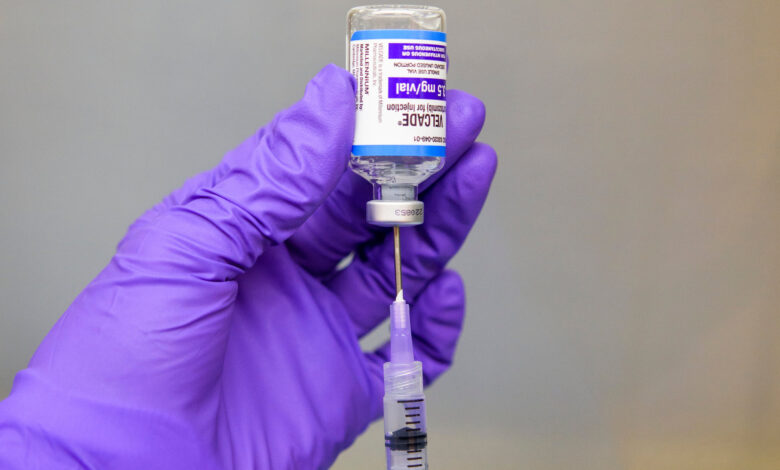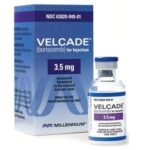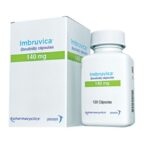How Long Does Velcade Stay In Your Body?

Velcade is a brand of bortezomib, an anti-cancer medication used to treat multiple myeloma and mantle cell lymphoma. This includes multiple myeloma in those who have and have not previously received treatment. It is generally used together with other medications.
Multiple myeloma and mantle cell lymphoma are well defined B-cell malignancies with significant disease burden worldwide.
How Velcade Works
Targeted therapy is the result of about 100 years of research dedicated to understanding the differences between cancer cells and normal cells. To date, cancer treatment has focused primarily on killing rapidly dividing cells because one feature of cancer cells is that they divide rapidly. Unfortunately, some of our normal cells divide rapidly too, causing multiple side effects.
Targeted therapy is about identifying other features of cancer cells. Scientists look for specific differences in the cancer cells and the normal cells. This information is used to create a targeted therapy to attack the cancer cells without damaging the normal cells, thus leading to fewer side effects. Each type of targeted therapy works a little bit differently but all interfere with the ability of the cancer cell to grow, divide, repair and/or communicate with other cells.
There are different types of targeted therapies, defined in three broad categories. Some targeted therapies focus on the internal components and function of the cancer cell. The targeted therapies use small molecules that can get into the cell and disrupt the function of the cells, causing them to die. There are several types of targeted therapy that focus on the inner parts of the cells. Other targeted therapies target receptors that are on the outside of the cell. Therapies that target receptors are also known as monoclonal antibodies. Antiangiogenesis inhibitors target the blood vessels that supply oxygen to the cells, ultimately causing the cells to starve.
Research continues to identify which cancers may be best treated with targeted therapies and to identify additional targets for more types of cancer.
Velcade targets and inhibits the proteasome enzyme complex within the cell. Proteasome is part of the cellular machinery and has many functions within the cell, such as it helps to control the level of many of the proteins that help to regulate cell division and cell survival. By interfering with its function this can lead to apoptosis (cell suicide). In the laboratory, it has been shown that cancer cells are more susceptible to the effects of proteasome inhibitors, than normal cells are. In multiple myeloma, Velcade works by blocking the activation of adhesion molecules that allow plasma cells to “nest” in the bone marrow.
How is Velcade given?
Velcade is given as an infusion into a vein through an IV. You will receive this infusion in a clinic or hospital setting. A doctor, nurse, or other healthcare provider will give you this infusion.
You may be given medication to prevent nausea or vomiting while you are receiving Velcade. Velcade can lower blood cells that help your body fight infections and help your blood to clot. Your blood will need to be tested often. Your cancer treatments may be delayed based on the results of these tests.
How long does Velcade Stay In Your Body?
Velcade is eliminated by both renal and hepatic routes. The mean elimination half-life (the time required for the drug concentration to decrease by half) of bortezomib range from 40 to 193 hours following a multiple dosing regimen at a 1 mg/m2 dose. The half-life ranged from 76 to 108 hours after multiple dosing of 1.3 mg/m2 bortezomib.
Metabolites of bortezomib are pharmacologically inactive and more than 30 metabolites have been identified in human and animal studies.
What are the possible Velcade side effects I should know?
Velcade can cause mild or serious side effects. The following lists contain some of the key side effects that may occur while taking Velcade. These lists don’t include all possible side effects.
For more information on the possible side effects of Velcade, talk with your doctor or pharmacist. They can give you tips on how to deal with any side effects that may be bothersome.
Note: The Food and Drug Administration (FDA) tracks side effects of drugs it has approved. If you would like to report to the FDA a side effect you’ve had with Velcade, you can do so through MedWatch.
Your side effects may vary from those listed below depending on your dosage of Velcade. They may also differ based on the condition you’re using Velcade to treat and whether you’re taking any other medications with Velcade.
Mild side effects
Mild side effects of Velcade can include:
- nausea and vomiting
- constipation
- tiredness
- fever
- trouble sleeping
- decreased appetite, which may lead to weight loss
- headache
- dizziness
- low blood pressure
- peripheral edema (swelling in your arms or legs)
Most of these side effects may go away within a few days or a couple of weeks. But if they become more severe or don’t go away, talk with your doctor or pharmacist.
* This is a partial list of mild side effects from Velcade. To learn about other mild side effects, talk with your doctor or pharmacist, or see Velcade’s prescribing information.
Serious side effects
Serious side effects from Velcade aren’t common, but they can occur. Call your doctor right away if you have serious side effects. Call 911 if your symptoms feel life threatening or if you think you’re having a medical emergency.
Serious side effects and their symptoms can include:
• Severe skin reactions. Symptoms can include:
o fever
o rash
o itching
o blistering and peeling of your skin
• Liver damage. Symptoms can include:
o nausea and vomiting
o loss of appetite
o tiredness
o dark colored urine
o jaundice (yellowing of your skin or the whites of your eyes)
• Lung damage. Symptoms can include:
o shortness of breath
o trouble breathing
o cough
o wheezing
• Brain swelling. Symptoms can include:
o seizures
o increased blood pressure
o vision problems
o confusion
o tiredness
• Infections, such as pneumonia. Symptoms will vary depending on the infection you have, but they can include:
o fever
o cough
o chest tightness
o chills
o tiredness
• Clotting disorders. Symptoms can include:
o unexplained bleeding or bruising
o blood in your urine
o petechiae (small purple dots on your skin that form in clusters)
• Tumor lysis syndrome (a condition that’s caused by cancer cell breakdown and may damage certain organs, such as your kidneys and heart). Symptoms can include:
o nausea and vomiting
o diarrhea
o muscle cramps
o joint pain
o tiredness
• Kidney disease. Symptoms may include:
o urinating less often than usual
o fatigue (lack of energy)
o blood in your urine
• Injection site reaction, which is discussed below in “Side effect details.”
Other serious side effects, explained in more detail below in “Side effect details,” include:
• allergic reaction
• rash caused by infection
• severe diarrhea
• neuropathy (nerve damage)
• heart disease, including cardiomyopathy (a weakened heart muscle) and cardiac amyloidosis (a condition that causes a buildup of protein in your heart muscle)
• blood disorders, such as low levels of certain blood cells
• psychiatric disorders, including thoughts of suicide





